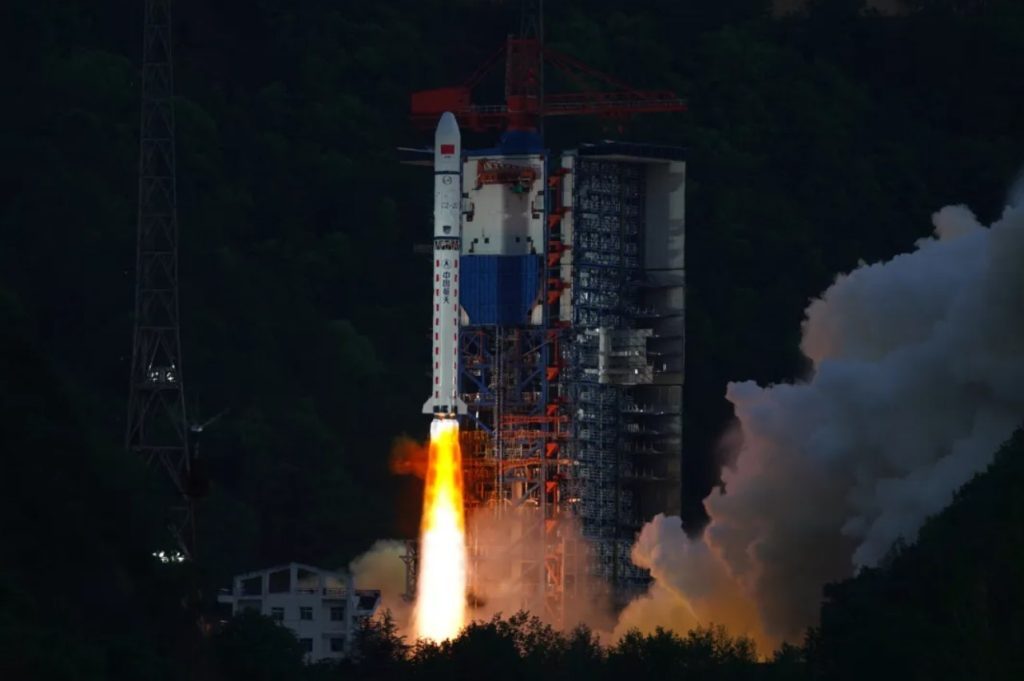HELSINKI — China put its first Yaogan-42 satellite into space late Tuesday, adding to the country’s increasing military satellite spying abilities.
A Long March 2D rocket took off from Xichang Satellite Launch Center at 6:56 p.m. Eastern (2256 UTC) April 2. The China Aerospace Science and Technology Corporation (CASC) announced launch success within the hour. CASC’s statement also revealed the previously unknown payload to be Yaogan-42 (01) (“remote sensing-42 (01)”).
The satellite was later tracked by the U.S. Space Force’s 18th Space Defense Squadron (SDS) in a roughly 500-kilometer-altitude orbit inclined by 35 degrees.
Both Yaogan-42 (02) and its Long March 2D launcher were developed and provided by CASC’s Shanghai Academy of Spaceflight Technology (SAST).
Neither CASC nor Chinese state media provided any details regarding the classified satellite. These statements omitted the usual general description of Yaogan satellites.
Some Yaogan satellites are described as being for purposes including land survey, crop yield estimation, environmental management, meteorological warning and forecasting, and disaster prevention and reduction. Uses of others include “electromagnetic environment detection and related technical tests.”
Outside observers assess Yaogan series satellites to be designated for military and civilian purposes.
The various series of Yaogan satellites are understood to include optical imaging, synthetic aperture radar (SAR) and electronic intelligence (ELINT) satellites. This combination provides high-resolution imagery and all-weather and all-day and night imagery, along with the collection of electronic signals from radar, communication systems and other electronic devices, with coverage of both land and sea.
The vast majority of Yaogan satellites operate in a series of low Earth and sun-synchronous orbits. Some groups of Yaogan satellites, such as Yaogan-31, could be analogous to U.S. Department of Defense Naval Ocean Surveillance System (NOSS) satellite triplets. Other groups, in orbits with inclinations of 35 degrees, ang spaced 60 or 120 degrees apart, provide near constant surveillance over areas of security concern close to China.
Additionally China launched the Yaogan-41 satellite towards geosynchronous orbit in late 2023. That satellite launched on a Long March 5, China’s largest operational rocket. The mission A used a new, elongated 18.5-meter-long, 5.2-meter-diameter payload fairing.
Tuesday’s launch was China’s 15th orbital mission of 2024. The country is aiming to launch around 100 times across 2024. Around 70 will be conducted by CASC, with China’s commercial launch service providers planning around 30 launches.
Commercial activity will include the new Tianlong-3 from Space Pioneer. The 71-meter-long rocket will be capable of lifting 17 tons of payload to low Earth orbit, or 14 tons to 500-kilometer sun-synchronous orbit, according to the firm. The rocket would become China’s second most capable rocket, behind the Long March 5. It is intended to have a reusable first stage in the future.
SAST plans to release its new, 3.8-meter-wide Long March 12, previously known as the “XLV,” during 2024.









